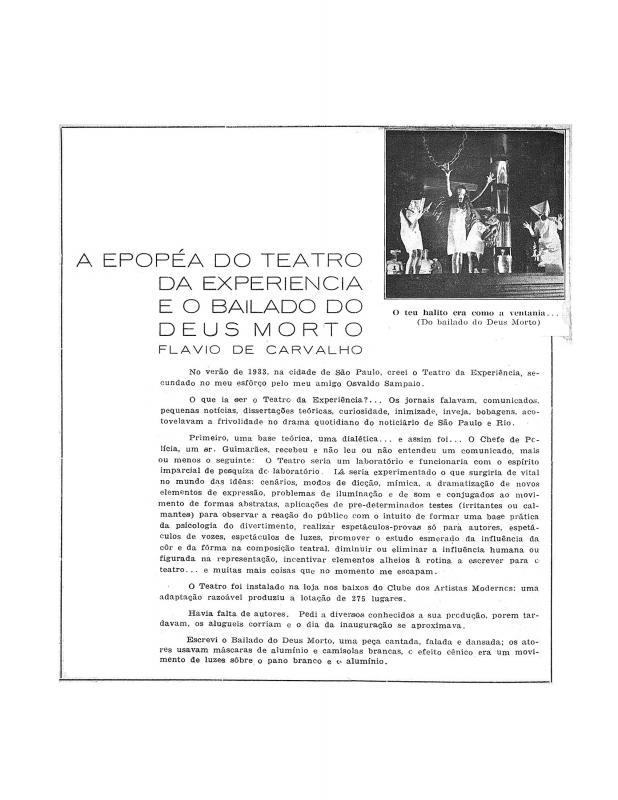This essay—a forthright discussion on Brazilian Surrealism and modernism—explains the author’s interest in the art produced by children, psychiatric patients, and non-Western peoples. In a predominantly figurative and nationalist milieu, Flávio de Carvalho (1899–1973) is one of the few Brazilian artists to express certain affinities with Dadaism and Surrealism. In addition to being a painter, he was also prone to provocative acts, such as his 1930 Experiência n.2, when he put on a broad-brimmed hat and paraded against the flow of a Catholic procession in downtown São Paulo. By destabilizing the social and moral status quo, he hoped to provoke situations that created emotional tension and social instability in order to study the resulting psychological reactions and the behavior of the masses when faced with a crisis. In the early 1930s, he organized exhibitions of art produced by children and psychiatric patients at the CAM (Clube dos Artistas Modernos), where he also presented the “Bailado do deus morto” [Dance of the Dead God], a theatrical production featuring black actors with industrial and primitive undertones; see: “A epopéia do teatro da experiencia e o bailado do deus morto” [ICAA digital archive, doc. no. 780339].
This essay is reminiscent of the scandalous lecture he gave at the IV Congresso Panamericano de Arquitetos in Rio de Janeiro in 1930, where he spoke as a representative of the “anthropophagus ideology” that was promoted in São Paulo in 1928 by the group of Brazilian modernists headed by Oswald de Andrade [“Uma tese curiosa: a cidade do homem nu” (doc. no. 783858)], which also referred to Freudian psychoanalysis.


